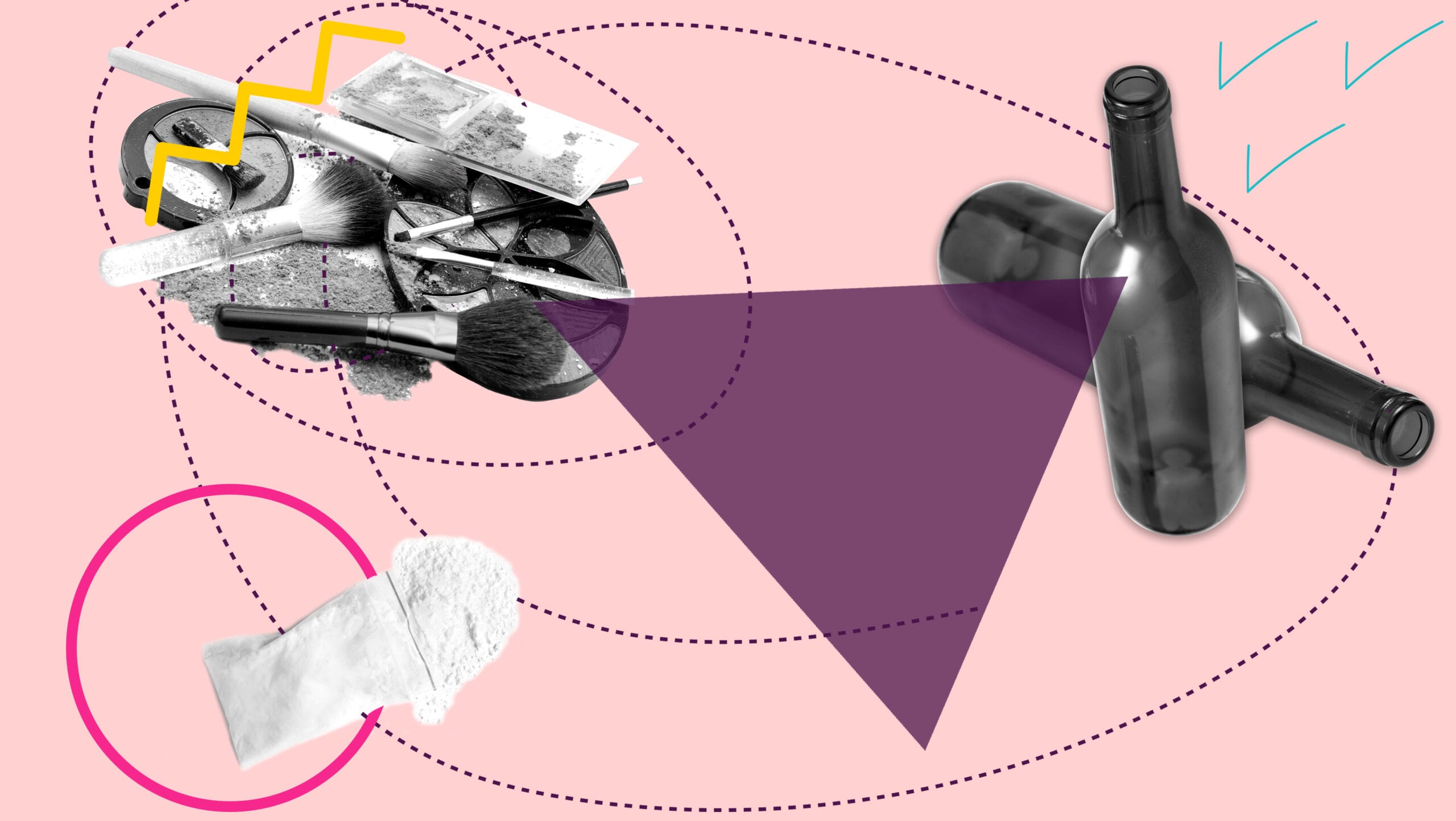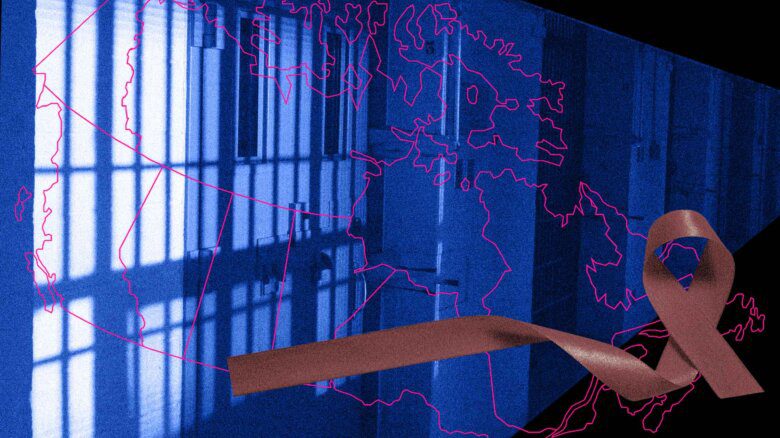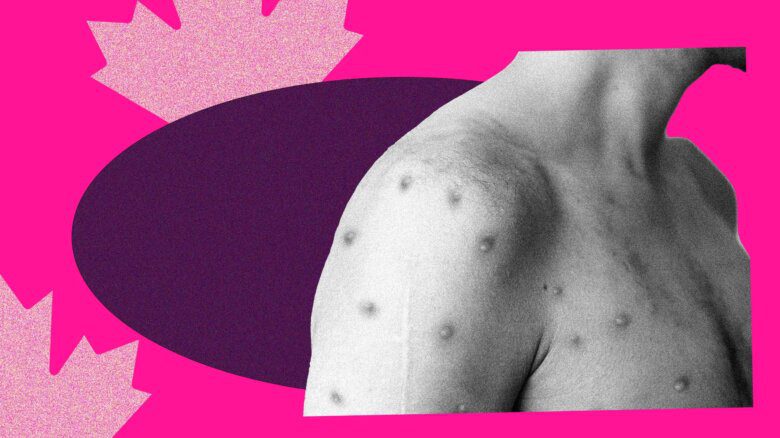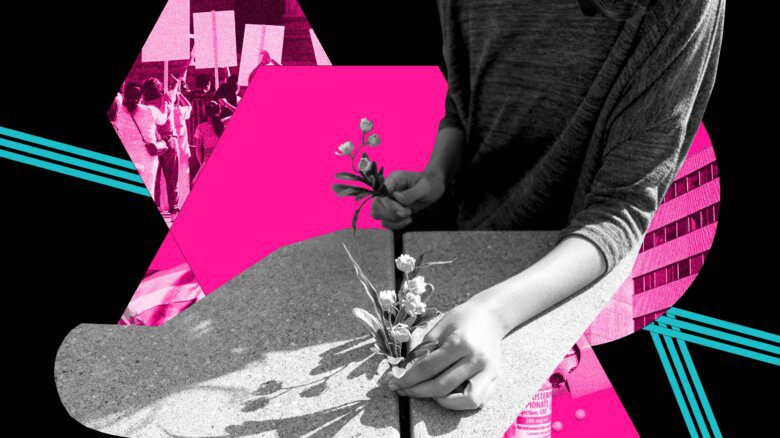In the first episode of Canada’s Drag Race, the fledgling spin off of the wildly popular RuPaul’s Drag Race, a solemn pre-runway conversation between contestants Juice Boxx and BOA was underway. While patting foundation onto their faces, the two Toronto queens exchanged stories about their struggles with substance use and addiction.
“I was just a mess,” BOA sighs, dabbing her brush in powder. “I was just like, ‘I need to quit drinking. I need to get my shit together.’”
“I was an asshole when I was drunk,” Boxx chimes in. “I wasn’t a nice person.”
The show cuts to Boxx giving an out-of-drag confessional. She’s been sober for two years, she explains, and calls it the best decision of her life. “I’m super proud of myself for making those decisions,” she says, her voice cracking and tears welling up in her eyes. “And I’m super proud of myself for kind of sticking with it, you know?”
The episode continues, and the subject quickly shifts to how each queen is feeling about pounding the Drag Race runway for the first time. But BOA and Boxx’s conversation looms over the confection that is a typical episode of Drag Race; by candidly discussing their journeys with sobriety on television, they joined a growing group of prominent drag performers speaking out about substance use and addiction in the LGBTQ2 community.
A 2011 U.S. study suggests that lesbian, gay and bisexual individuals are at a greater risk for substance use disorders (neither trans nor Two-Spirit people were included in the study’s methodology). Another study from 2019 found that LGBTQ individuals are at an increased risk for opioid use disorders. Both studies point to the increased stress of living in a homophobic and transphobic society as a potential explanation for why queer and trans folks are at a higher risk of living with addiction.
And the ongoing pandemic seems to have made matters worse: In a more recent report, the Canadian Centre on Substance Use and Addiction found that the pandemic has restricted access to life-saving addiction supports. Another study predicts the stress associated with the pandemic will “surge” substance use, and says marginalized communities are at an increased risk of experiencing addiction.
“With the growing popularity of shows like Drag Race, queer folks and drag performers are using their new and bigger platforms to bring substance use disorders into the open.”
These studies point to a situation that is dire yet often left unspoken. And with the growing popularity of shows like Drag Race, queer folks and drag performers (who have always been among the community’s most visible spokespeople) are using their new and bigger platforms to bring substance use disorders into the open.
BOA says she has been the “drunk friend at the party” since she was 16 years old.
The boisterous drag queen, whose name stands for “Bitch on Arrival,” moved from Windsor, Ont., to Toronto in her teens. Back home, she was just a kid who liked to drink with friends; onstage at a gay bar in Toronto’s Gay Village, she was a superstar.
But stardom came with a price. BOA admits her drinking was a problem in Windsor, but says it got out of control when she became embedded in Toronto’s big-city drag scene.
“Doing drag, you get drink tickets and people want to buy you drinks,” BOA says over Zoom. “I started doing that. And then drugs would be flowing, so I would partake.”
She says she never went out with the intention of getting wasted, but that it often ended up happening. She soon got caught in a “cycle” of substance use that seeped into her personal life and her day job.
“I would wake up hungover and then I would go to work. And then I would get ready for a show after and I would still be hungover so I would have a drink to kind of make myself feel better.”
She knew she had hit “rock bottom” when drinking stopped being a social activity and started to become a crutch.
“It got really, really bad to the point where I was secluding myself just to drink,” she says. “I had nothing going on and I was probably just masking some other problems.”
BOA is not the only drag performer to develop an unhealthy relationship with drugs and alcohol. The working conditions of a drag artist are often a trigger: Cisgender, heterosexual people have always had plenty of substance-less spaces to meet each other, but queer people have historically been limited to connecting in bars and clubs. And while some famous queens have the opportunity to perform in theatres, most entertain in bars and clubs where alcohol is readily available. They’re often the main entertainment at the venue, the life of the party—and as a result, staff and guests frequently tip queens with free booze and party drugs.
RuPaul’s Drag Race alumni like Jujubee, Katya and even RuPaul himself have shared their sobriety stories on the show. Given Drag Race’s immense influence over contemporary queer culture, it’s no small thing for queens to openly discuss their experiences with addiction—a subject that continues to be shrouded with substantial stigma.
"I'm not completely found, but I'm not as lost as I used to be."
Sending you so much love and support @jujuboston, thank you for sharing your story. ❤️ #AllStars5 pic.twitter.com/EKTzY2Vo8q
— RuPaul's Drag Race (@RuPaulsDragRace) July 11, 2020
Dan de Figueiredo, a clinical social worker at Rainbow Services, an LGBTQ2 addiction program at the Centre for Mental Health and Addiction (CAMH), works with people living with addiction. He says the queer community’s connection to substance use is a matter of history.
“There has often been a very strong link in our community to socializing in bars,” de Figueiredo says. “So a lot of our socializing was very much tied to alcohol use and drug use.”
The allure of that party lifestyle is what got Juice Boxx into drag in the first place.
“I saw how much attention all the drag queens got and how good they felt about themselves and how popular they were and how much free booze they got,” Boxx says. “And I was like, ‘Oh, I like that. I want to be her.’”
Boxx started performing in drag and took advantage of all the perks she was craving—especially the free alcohol. She was having the time of her life and finding success in the crowded Toronto drag circuit. But her alcohol use soon became excessive, and her behaviour increasingly erratic.
“I was getting in a lot of fights with people. There was a lot of drama surrounding me. I was losing opportunities that I really wanted to have because I was starting to get this [bad] reputation.”
She decided to get sober. She says she was sick of being seen as a “party girl” or a “white twink in a wig”—she takes drag seriously and wanted to be treated accordingly.
But quitting wasn’t easy. Boxx spent a lot of nights alone in dressing rooms, passing the time between performances on her phone while many of the other queens partied.
“It was lonely and it was a little sad,” Boxx says. “But I felt good about my performances because I was so present and I could actually get on stage and not feel like I was going to topple over.”
She says it’s tough for queens to avoid spiralling into excessive drug and alcohol use because queer culture—and especially drag culture—is deeply connected to gathering in physical spaces that encourage the consumption of substances.
“Everybody starts in a bar because that’s what drag culture is,” Boxx says. “There’s more than just alcohol that’s freely available to us because people just want to give us things to be a part of the party. I think people need to realize that there needs to be a border put up with a lot of performers when it comes to that because we can fall into a pit very easily.”
It’s a pit Kimmy Couture has been fighting to stay out of for her entire career. The Ottawa-based drag queen grew up in the Philippines, where she struggled with sobriety for most of her teens. She got her first stomach ulcer from drinking excessively at age 12, which she brushed off as a one-time issue.
When she immigrated to Canada at age 19, her drinking became worse. She once went on a three-week binge that caused her body to shut down. She suffered stomach pains and threw up blood.
“There was a wound in there which was bleeding all the time because there was nothing to digest,” Couture says. “All I was consuming was alcohol.”
She ended up in the hospital; it took three months for her stomach ulcer to heal. For Couture, it was a wake-up call. She quit alcohol.
At around the same time, she was starting to become prominent in the Ottawa drag scene. She made a name for herself with her high-octane performances and glamourous looks, but struggled with the darker side of drag.
“I was being exposed to hard drugs for the first time,” Couture says. “It was my first year of sobriety, so my cravings were still there.”
She fought hard to resist and found it to be a lonely battle. At the time, she didn’t have a lot of support from her fellow queens. Ultimately, she says she decided to put herself first.
“The whole time I was just thinking, ‘This is for my health. This is really important for me. I just really have to say no.’”
Couture’s drag career started to soar. She was crowned Ms. Capital Pride in 2018—Ottawa’s greatest drag laurel—and has firmly established herself as one of the city’s most consistent performers. But none of it was as a Couture: She had a different last name while her star was rising.
Local drag legend Icesis Couture bonded with Kimmy over their shared sobriety and love for dance. This year, Icesis adopted Kimmy as her drag daughter, making them a certified drag family.
“It’s definitely big shoes to fill,” Kimmy says. “But it just gave me more drive to do better and
follow her footsteps and make her proud.”
Although having a drag family isn’t necessarily accessible to all queer folks, de Figueiredo is hoping to achieve a similar effect with his work at Rainbow Services.
He says having the safe space of queer-specific programming is what makes Rainbow Services successful; however, the community will only start to heal once the stigma around both substance use and queerness is removed.
“I don’t know if there’s a way to have more acceptance in the world,” he says. “But having programs like Rainbow Services helps.”
Although there is a dearth of robust research on how queer people are uniquely affected by substance use disorders, Jaymie Sampa, manager of programs and partnership development at The 519 community centre, says the solution is “peer-based programming.” In other words: Having queer folks run programs for other queer folks.
“We really try to ensure there’s a high level of value placed on the expertise that comes from having lived experience,” Sampa says. The 519 is a Toronto-based LGBTQ2 support centre that offers a range of peer-based initiatives, including their “Double Recovery” program where people living with both mental illness and addiction can seek support from people with similar experiences.
In Toronto, queer and trans-specific grassroot support groups are especially important right now. The LGBTQ2 community in the city’s Gay Village is in the midst of a crystal meth crisis. Crystal meth—also known as Tina or, simply, “meth”—is a highly addictive stimulant that affects the nervous system, making users experience a boundless, euphoric infusion of energy. However, methamphetamines like crystal meth can prevent users from sleeping for days and can potentially lead to increased blood pressure, bleeding in the brain, seizures and skeletal breakdown.
According to de Figueiredo, queer people—mostly gay men—have been pairing doses of crystal meth with sexual activity, which is typically not how non-queer people consume the drug.
“If we were to put a group of people together—straight men and gay men—and talk about their use of crystal now, it would be like two different conversations.”
“If we were to put a group of people together—straight men and gay men—and talk about their use of crystal now, it would be like two different conversations,” de Figueiredo says. As a result, queer-specific programs to address the crisis within the LGBTQ2 community are imperative.
Sampa and her team at The 519 kickstarted the Breaking the Ice project for that exact reason. She’s hoping the project can reduce the stigma around crystal meth usage so queer folks feel safer and more empowered to seek support. Sampa says, so far, over 100 people have submitted a “letter to meth” where they explain their relationship to the drug. It’s shed some light on why people are using it, and how they can best be supported.
“A lot of people talked about using crystal as a safety mechanism, as a way in which to remain awake at night to avoid getting robbed or experiencing sexual violence or being preyed upon,” Sampa says. “There’s also more hedonistic realities where it just feels good to use. In the queer community, we want to celebrate sexuality, we want to celebrate freedom. And we get into this whole dynamic, particularly within LGBTQ communities, where the realities of sex and pleasure are being uninhibited and they’re able to feel authentic and desired.”
Sampa knows from her experience at The 519 that having people with shared experiences to talk to is an extremely effective way to address substance use. “It pushes back against this notion that academia and textbooks and theory are really what makes good community workers,” she says. “Somebody who hasn’t lived through that might not be able to have that kind of point of view.”
BOA understands that better than most. When she hit rock bottom, she admitted to her newly-sober partner that her own substance use was a problem she couldn’t solve alone.
With her partner’s support, BOA went to the Centre for Addiction and Mental Health (CAMH), a Toronto hospital which has free programs for those living with addiction. With the help of those around her and the resources she was able to access, BOA quit alcohol and drugs. She recently celebrated 16 months of sobriety and can’t see herself turning back.
“My life is just completely different,” she explains. “My heart isn’t palpitating. I wake up and I open my blinds and the light comes in, and I feel happy and productive.”
BOA and her partner have been together five years and have adopted a dog together—a Shar Pei/Lab mix named Bort. For now, COVID-19 has thrown a wrench in her plans, but she’s excited to start her new, post-Drag Race life.
“I want to do lots of traveling. I want to be able to support my partner who has been able to support me over the years,” she says. “Also, I want to have lots of nice fucking costumes. Oh my god, I want to have gorgeous costumes.”
Most of all, she says she’s looking forward to seeing how sharing her experience with substance use helps people.
“I want to meet the people who I’ve hopefully had a positive impact on. I knew I had this platform, and if I’m able to tell that story, I’m going to tell the story so people know that they’re not alone,” BOA says. “Hopefully I can make some sort of difference.”
Legacy: September 22, 2020 11:54 amAn earlier version of this story misidentified the workplace of social worker Dan de Figueiredo.


 Why you can trust Xtra
Why you can trust Xtra


